Eamonn Darcy v Ben Crenshaw in the Ryder Cup singles at Muirfield Village on Sunday, September 27, 1987. The man from Delgany, County Wicklow walks off the first hole one–down to the USA star when suddenly, a big lump of Americana jumps into his path.
Darcy recalled the moment: “The crowds are eight deep on either side of the passageway to the next tee. This huge guy jumps out into the middle of this little laneway.
“He’s got to be at least 25 stone and he’s frothing at the mouth and screaming ‘kill ‘em Ben, take no prisoners.’ I thought to myself ‘jaysus, this is going to be good’.
“Did I think of giving him a dig? No way! He was just too big. He’d have killed me! It was very intense but laughable in its own way. But we got on with it. Ben and I were talking, not too much, but polite and friendly and giving putts and stuff.”
Ah, bliss. The good old days pre-Covid pandemic when the Ryder Cup crowds were genuinely eight deep and the passions, especially in the away matches, were uber-intense. This year’s staging at ‘Whispering’ Straits, with Europe captained by our own Pádraig Harrington is unlikely to be blessed with anything like the huge galleries of the past, but having the match played will be an achievement in itself.
And this being Ryder Cup year, Eamonn Darcy’s feat of 1987 in defeating Ben Crenshaw at the 18th in Muirfield Village will get plenty of exposure – and rightly so. But before rebooting the memories of Darcy’s unforgettable and legendary putt to win a crucial point for Europe, thereby kicking open the door to an historic first victory on American soil, what’s happening for Eamonn in 2021? Not a lot, is the answer, at least in terms of his transition from tournament player to after-dinner speaker. Speaking from his 42-acre holding in Enniskerry, County Wicklow, Eamonn said:
“This covid is a real headache. Since I stopped playing competitively in 2018, I’ve been doing after-dinner speaking at golf clubs and events, and playing a bit of golf with corporate people and really enjoying it.
“I’ve plenty of stories to tell and I’m looking forward to getting back to it when restrictions are lifted. I had a good few corporate days lined up last year but they all went out the window. At the moment I have a routine for each day and I’m quite busy till probably around 11.30 every morning. I’ve got a few horses, a few cattle, some goats, and dogs. They all need feeding and cleaning out and all that kind of stuff.”
County Wicklow born and bred, Eamonn grew up around golf. His family lived at Bellevue Cottages which backed onto the old fourth green at Delgany golf club. He was the third of six children, five boys and a girl born to Christy and Rita Darcy. Sadly, his mother died in 1963. She was 36 and died of a brain hemorrhage. His dad was 39.
“I vaguely remember my mother used to complain of headaches. When something is real negative you block it out of your mind. That’s just something I’ve always done,” said Eamonn.
That cannot have been easy but the outdoors life and horses in particular became young Eamonn’s passion. The owner of a local riding school, a man named Jimmy McGee – no relation to the late, great sports broadcaster of the same name – gave Eamonn carte blanche to saddle up and ride out horses daily.
“When I was young my passion was horses. I loved it. Absolutely loved it. I had my sights set on career as a jockey. I was under nine stone, then suddenly I just sprouted up. I just started maturing and that was the end of it. Looking back, probably the best thing that ever happened me was that I got bigger at that time,” he said.
The young Darcy could hardly have foreseen how he would make a living at golf but the pedigree was well established in his family.
“Golf was in my family line. My great grand-uncle Pat Doyle was the first pro in Delgany in 1908. He moved around a bit in Ireland, and in 1912 decided to go to America. He had booked his passage on the Titanic but the train to Cobh was late and he missed the boat. How lucky was that!
“Later he went to America and played in the famous 1913 US Open at Brookline won by the amateur Francis Ouimet. Pat finished 10th in that Open. He made a good career as a pro in America. Among his pupils were US President William Taft and the boxing legend Joe Louis. Closer to home my dad was an artisan member at Delgany and played off scratch for many years. His brother, Jack Darcy, was a pro in Bath in England. I caddied and played at Delgany,”said Eamonn.
By the age of 16, Eamonn, a 12 handicap, found himself wondering: “what now?” The answer came from Jimmy Bradshaw, brother of the great Harry, who was the professional at Delgany golf club. Jimmy had heard that Wattie Sullivan, the Grange GC professional, was looking for an assistant and suggested young Darcy as a possibility
“Wattie Sullivan took me on as an assistant in Grange when I was 16. He paid me £3 a week, for working mostly in the shop. When I was there a few months a man named Spencer Freeman who was in his seventies, got me to play nine holes with him every morning, five days a week. He used to give me 30 shillings for each round, so that was a nice boost to my earnings. He had been one of the founders of the Irish Hospital Sweepstakes.”
After a couple of years at Grange, Eamonn felt he needed more playing time.
“I saw an ad in the magazine ‘Golf illustrated’ for a job at Erewash Valley in Derbyshire. I applied and went over to Holyhead to meet the pro, David Parsonage, because his parents lived there. He was a lovely, lovely man and a really good golfer. That was in November 1969. He offered me the job and I went back in the April of 1970 to start my career in Erewash Valley.
“The pro shop at the club was very close to the chipping green, so I used to chip balls all day long and look after the shop. If somebody came along, they’d ring the bell at the door, I’d drop the wedge, run in, serve them, then back out again. Because of that I got so good at chipping that at the height of my career I wouldn’t say there was five better chippers in the world,” he said.
His swing, of course, was unique but so effective. He had honed it himself and never had a coach. There was also his own version of golf psychology. Eamonn was ahead of his time in utilizing the ‘mind game’ in those years.
“I was very hungry. I had great ambitions and great goals. The first time I did well it wasn’t a surprise for me because I had been there so often in my mind long before I got on the Tour. I used to lie in bed and night after night I would imagine myself walking down the fairway, winning the tournament and making the speech and all that kind of stuff long before it happened,” said Eamonn.
To play in tournaments money was needed and The Darce came up with a novel idea to get some funding by learning how to drive a crane at the local steelworks.
“In winter time around Derbyshire it wasn’t great golfing weather. There was a big steel works in the area and a lot of the managers used to play in Erewash Valley. I thought would be good idea to get a few bob working there in order to play a few local events the following year.
“One of the managers helped me out by getting me a job as a crane driver. I did a crash course for seven weeks learning how to drive a crane. I used to work five nights a week. Start at 8pm finish at 6am. When I was working at the steelworks, I’d sleep for a few hours after getting home, and go to the club. At weekends I was always there but the club was very quiet that time of year,” he said.
The next step was to get out and mixing it with the Tour pros on what was mainly a Britain and Ireland circuit in those days.
“My first big break was winning the Irish Assistants’ championship which was played in conjunction with the Gallaher’s Ulster Open at Malone golf club in 1971. I opened with 68, then shot 74 to qualify for the main event, won the Irish Assistants and think I made about £90. That was my first cheque. It kicked off from there,” said Eamonn.
From playing a few events in 1971, Darcy’s target was to forge a life on the new European Tour began in 1972 and he proved unstoppable. Between 1972 and ’75, his progress was spectacular. He played eight official events in 1972 and finished 179th in the rankings.
He moved up to 107 in 1973, 34th in 1974, and in 1975, at the age of 23, finished third in the Order of Merit behind Dale Hayes of South Africa and Arnold Palmer.
“That got me on the Ryder Cup team for 1975 as number one because it was restricted to players from Great Britain and Ireland at that time. As the leading qualifier, I had the right to be on the selection committee. I declined because I didn’t think I had the experience for that job.
“It’s probably just as well, because my great pal Christy O’Connor Junior was one of the four picks for Laurel Valley, so nobody could accuse me of any bias. John O’Leary also played on that team as an automatic qualifier,” he said.
Unfortunately, Laurel Valley proved a big disappointment with the USA winning 21-11. Darcy gained just a half point which came in Saturday fourballs when he partnered England’s Guy Hunt against Al Geiberger and Ray Floyd.
Life on Tour in the Seventies was nothing like the 21st century version which stretches pretty much all year round. Back then, the European Tour ran only from April to October. Very few from this side of the Atlantic got to play in American events, so Africa and the Safari Tour offered early-season opportunities.
“There were tournaments in Zambia, Nigeria and Kenya. We’d go out there early in the year. They were big tournaments for those countries and we’d get huge crowds, particularly with ex-pats.
“There were no hotels, so you’d stay with families who put up all the players. Christy O’Connor Junior and I would travel together, and that probably started around 1974. I did well out there and won the Mufulira Open in Zambia in 1984, and came second a few times,” said Eamonn.
Being Africa and in turbulent times, it was not all plain sailing. In fact, sometimes it got downright dangerous.
“Talking of Mufulira reminds me how scary things could get out there,” said Eamonn. “Christy Junior and I and other players had guns pointed at us a number of times.”
The summer of 1976 is remembered as one of the driest and hottest in these islands, and Eamonn’s golf game matched the soaring temperatures.
Between the start of May and the end of August he won the Sumrie-Bournemouth Better Ball tournament with Christy Junior; the World Under-25 championship in France; was beaten in a playoff for the Penfold PGA at Royal St George’s by Neil Coles; and won the Irish Dunlop Championship.
“I finished second in the Order of Merit to Seve Ballesteros. Incidentally, that Penfold PGA was unlucky for me. In 1975 at Sandwich I shot 78 in the last round. Arnold Palmer, who won it, shot 71, and I was runner-up, finishing two shots behind Palmer.
“In ’76, I thought I had it won in the playoff. On the second tie hole I holed a big one for birdie from about 15 feet. But Colesy followed me in from ten feet. He thought he’d missed it. I said to him ‘You’re a lucky bastard. That went in the wrong side’ and he giggled. He won on the next tie hole. He was some player.”
Onward and upward into 1977. The highlight was a maiden victory in a regular European Tour event at the Greater Manchester Open. Eamonn did it in style, hammering the Wilmslow GC course with four sub-60 rounds – 69, 67, 66, 67 – for an 11-under par winning total of 269, eight shots clear of the field.
His second Ryder Cup appearance came in the 1977 match at Royal Lytham & St Anne’s where GB and Ireland faced a top class USA team in which Jack Nicklaus, Tom Watson and Lee Trevino were the headline stars. The match format had changed to one series of foursomes, one of fourballs and ten singles matches. No great memories here as GB and I lost 12½ to 7½.
Darcy partnered an out-of-form Tony Jacklin in foursomes and fourballs , losing both matches, and suffered a narrow one-hole defeat to reigning US Open champion Hubert Green. His next appearance in the Ryder Cup came in 1981. Walton Heath was the venue and for only the second time, the team from this side of the Atlantic incorporated all of Europe.
John Jacobs, renowned coach and instrumental in driving the formation of the European Tour in the previous decade, retained the captaincy from 1979. Jacobs’ not-so-merry men got hosed 17-11 in that match at The Greenbrier, and were similarly brushed aside in ’81 at Walton Heath by 18½ to 7½.
Again, no happy memories for Eamonn. His game was not at the level he would have liked and it ended with a dubious ‘honour’ – he was the last player that the great Jack Nicklaus played in a Ryder Cup. The Golden Bear signed off in his fifth and final Ryder Cup appearance as a player with a 5&3 singles victory over his Irish opponent.
Two years later Nicklaus was non-playing captain of a USA team which squeaked a 14½ to 13½ win to a resurgent European team which was transformed by the leadership of skipper Tony Jacklin. Darcy – in fact, no Irishman – made the team for The Belfry in 1985 when Jacklin’s Europe cut the USA down to size with a memorable victory.
And then came 1987 at Muirfield Village, Ohio, the Bear’s lair. Nicklaus captained the USA for the second time, and this was extra special because it was on his prized home turf. Eamonn Darcy was back on the European team. By late afternoon on the Sunday of the Match, the 6ft 2ins son of Ireland was embroiled in a battle with Ben Crenshaw.
“Jacklin told us he would pick guys who were getting points on the board. It was fair enough. I didn’t play on the Friday, and got one outing in the fourballs on the Saturday. Myself and Gordon Brand Junior were beaten 3&2 by Payne Stewart and Andy Bean.
“To me it didn’t really matter that I’d only played in one fourball. To be part of the team was great. They were all playing great. We had a huge lead (10½ to 5 ½) going into the singles, but it all went pear shaped for some reason. Maybe the guys were tired, I don’t know,” he said
Despite the rise of the American wave, the gritty native of Wicklow had a serious level of self-belief and playing Crenshaw in those circumstances did not faze him at all.
He knew that anything could happen in match play. As has been often recalled since then, Crenshaw broke his putter on the sixth hole when swiping at a pine cone in frustration, but it never registered with his opponent.
“Can you imagine if I had lost that match to your man and him with no putter? And I didn’t know he’d broken his putter. Never saw it. It just shows how concentrated I was that day. I just thought ‘he’d missed a couple of putts with the putter and that he’s taken out the 1-iron’. But the thing was with that tournament, it was so big that if your mind drifted at all it would just swallow you up,” he said.
The key phase of an intense match came on the closing holes. Ben was one up playing the 17th but the Irishman won the hole with a birdie after striking his 6-iron second shot to three feet of the flag. All square going to the 18th tee.
Nerves jangling all round for both men. Darcy took 3-wood and made the fairway. Crenshaw found water with his drive, took a penalty drop and hooked his third shot into a greenside bunker. Darcy’s 3-iron from 190 yards flew long and hard towards the flag but did not have enough height and found sand. From their respective bunker shots, both players found the green. Crenshaw missed with his first putt and had to hole out for a bogey five.
And then, the pressure fell on Darcy’s broad shoulders. The green was like glass. A very scary putt, with everything on the line. US captain Nicklaus murmured to one of his men: “If this doesn’t go in it’ll be twenty feet past the hole. This isn’t over yet.”
Darcy was oblivious to everything except the putt. He selected the line, left half of the hole. Told himself ‘just kiss this thing.’ The putter barely touched the ball, but the stroke was true. He made the contact then dared to lift his eyes to see it rolling, rolling, gathering speed… and then IT’S IN! Joy for Europe, despair for America. Technically Seve Ballesteros holed the match-winning putt but he was having none of it. The great Spaniard knew how crucial Darcy’s win over Crenshaw was to the Europeans.
When he was asked afterwards about holing the winning putt, Seve replied: “No, I didn’t. Darcy holed the winning putt.”
History, indeed. The first European team to win on American soil, and, although we did not know it, Eamonn Darcy began the lineage of Irish “Ryder Cup heroes” that was to feature Philip Walton (1995), Paul McGinley (2002), and Graeme McDowell (2010).

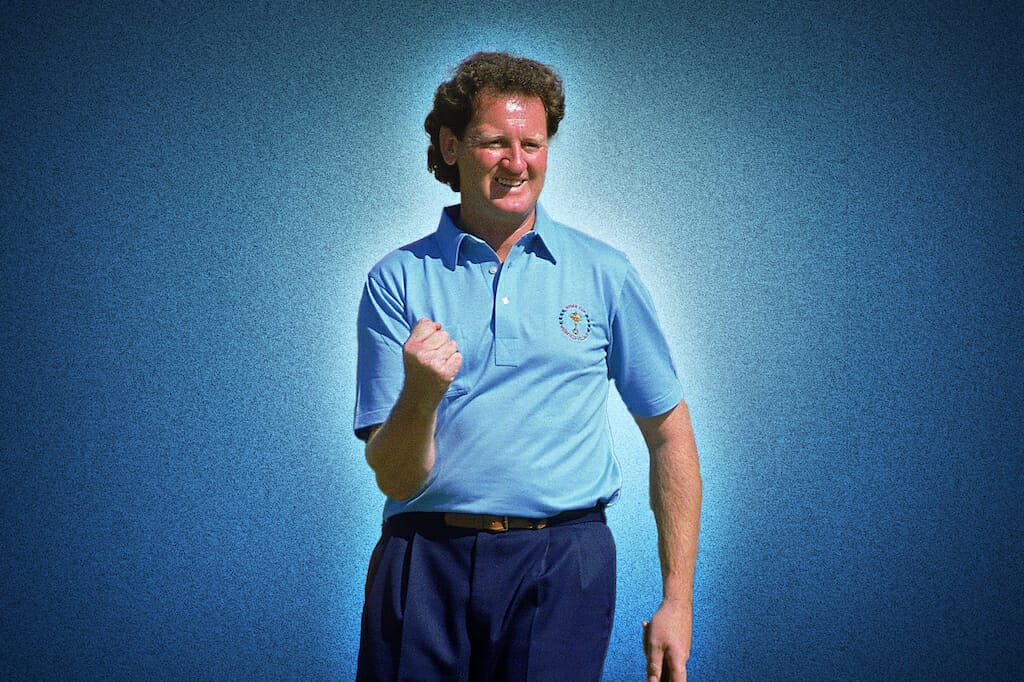





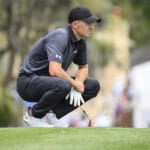
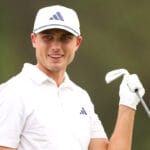
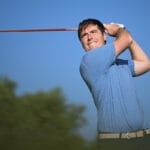
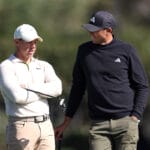

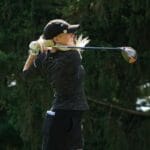


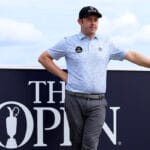








Leave a comment